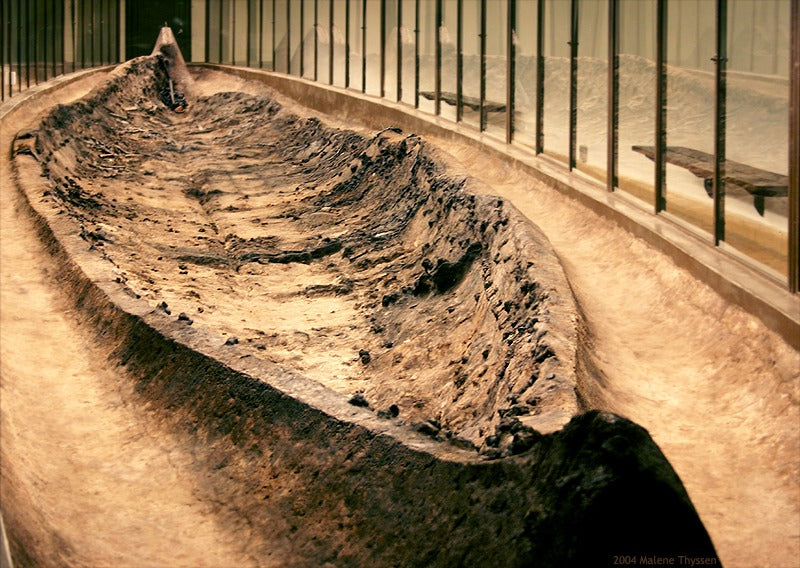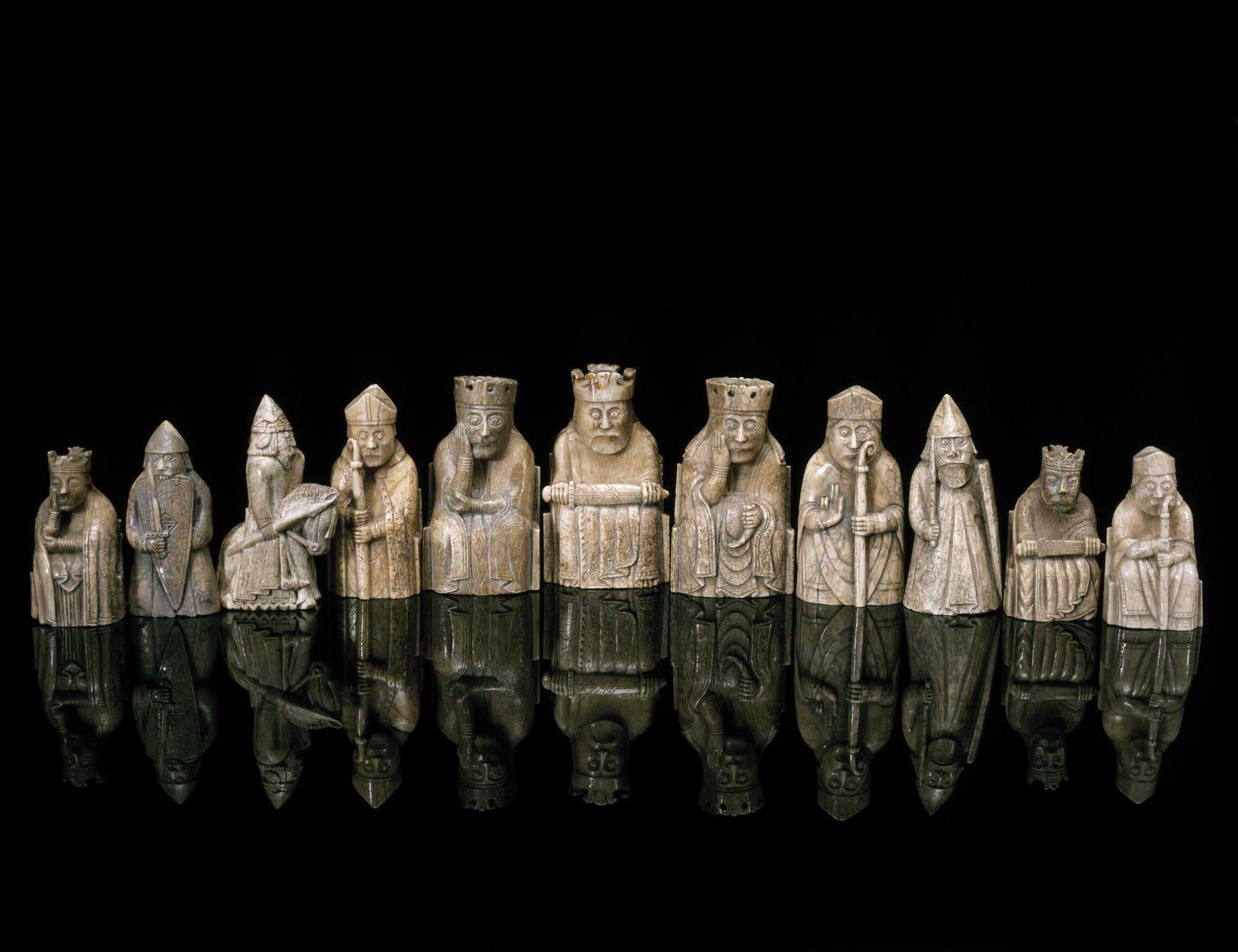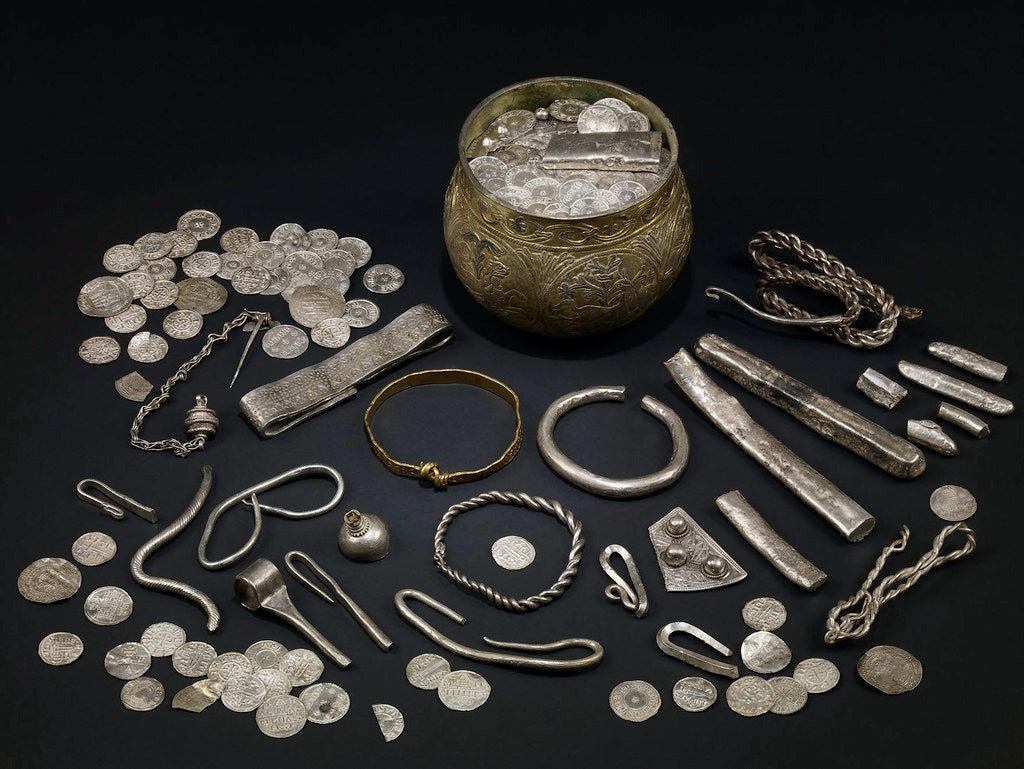
The Ladby Viking Ship: Denmark's Unique Norse Burial Unveiled
Picture this: a magnificent Viking ship, once the pride of a powerful king, now resting beneath the earth for over a thousand years. This isn't the opening scene of a historical novel – it's the real-life story of the Ladby Ship, one of the most fascinating archaeological discoveries from the Viking Age.
The Ladby Ship, unearthed in Denmark, offers us a rare glimpse into the world of Viking royalty and their beliefs about the afterlife. But what makes this ship so special? Why has it captured the imagination of historians and archaeology enthusiasts alike? Let's set sail on a journey through time to explore the mysteries of the Ladby Ship burial.
Historical Context of Viking Ship Burials

The Ladby Burial Mound / Image Credit: Malene Thyssen CC BY-SA 3.0
Viking Burial Practices
To understand the Ladby Ship, we first need to dive into Viking burial customs. These Norse seafarers had a rich tapestry of rituals surrounding death and the afterlife. While many Vikings were cremated, the elite often opted for more elaborate send-offs.
Significance of Ship Burials
Ship burials were the crème de la crème of Viking funerals. Think of them as the Viking equivalent of a pharaoh's pyramid – a statement of power, wealth, and belief in an afterlife where one's earthly possessions might come in handy. The Ladby Ship is a prime example of this practice, showcasing the lengths to which Viking nobility would go to ensure a grand passage into the next world.
Discovery of the Ladby Ship

The Excavation Process
The Ladby Ship's discovery reads like an archaeological thriller. In 1934, farmer Harius Hansen noticed something odd about a mound on his property. Little did he know that beneath the earth lay a treasure trove of Viking history. Archaeologists soon swooped in, carefully peeling back layers of time to reveal the ship's secrets.
Structure and Design of the Ladby Ship

Ship Construction Techniques
The Ladby Ship wasn't just any old boat. It was a masterpiece of Viking shipbuilding. Constructed using the clinker-built technique – where planks overlap each other – the ship was both sturdy and flexible, perfect for navigating the rough North Sea.
Size and Capacity
Measuring about 21.5 meters long and 3 meters wide, the Ladby Ship was no small fry. It could have comfortably carried a crew of around 32 men. But in its final role, it carried just one passenger – albeit a very important one – on a voyage to the afterlife.
Artifacts Found in the Ladby Ship

Weapons and Armor
What's a Viking king without his weapons? The Ladby Ship didn't disappoint. Archaeologists uncovered fragments of shields, swords, and axes. These weren't just for show – they were top-quality armaments fit for a warrior king. The excavation revealed at least two battle axes and numerous shield fragments, painting a picture of a well-armed leader ready for combat even in the afterlife.
Interestingly, some of these weapons showed signs of deliberate damage. This ritual "killing" of objects was a common Viking practice, believed to release the spirit of the item so it could accompany the deceased to the afterlife. It's a fascinating glimpse into the complex beliefs surrounding death in Viking culture.
Personal Belongings
It wasn't all about warfare, though. Personal items found in the ship give us a glimpse into the softer side of Viking life. Combs, gaming pieces, and even a silver drinking cup hint at a life of luxury and leisure. The silver-mounted drinking cup, in particular, stands out as a symbol of the occupant's high status and refined tastes.
A gaming board with glass playing pieces was another intriguing find. It suggests that strategic thinking and entertainment were valued alongside martial prowess. Fragments of finely woven textiles were also discovered, offering insights into Viking craftsmanship and fashion.
One of the most significant finds was the abundance of horse equipment. Several sets of ornate horse harnesses and stirrups were uncovered, some decorated with silver and gold. These lavish trappings not only speak to the importance of horses in Viking society but also to the wealth and status of the ship's owner.
Animal Remains
Perhaps the most poignant finds were the animal remains. Horses, dogs, and even a peacock were buried alongside the king. These weren't just pets – they were symbols of status and companions for the afterlife. The excavation revealed the skeletons of 11 horses and 3 to 4 dogs, suggesting a belief that these loyal companions would be needed in the next world.
The discovery of peacock remains was particularly fascinating. This exotic bird, far from its native lands, hints at the far-reaching trade connections of the Viking world. It's a testament to the global nature of Viking commerce and the prestigious items that a king could acquire.
Beyond the animals themselves, parts of the ship's equipment were also found. Fragments of the steering oar and sail offered valuable clues about Viking navigation techniques, underscoring the maritime prowess that made the Vikings such formidable explorers and traders.
Curiously, while the ship was rich in artifacts and animal remains, no human bones were found. This absence is likely due to the acidic soil conditions which destroyed organic materials over time. Yet, the lavishness of the burial goods leaves no doubt about the high status of the person once interred there.
The Ladby King: Who Was He?

Theories about the Ship's Owner
The million-dollar question: who was the Ladby King? While we don't have a name, the evidence paints a picture of a powerful ruler. Some theories suggest he might have been a local king or chieftain, possibly with connections to the royal line of Denmark.
Social Status and Power
The sheer opulence of the burial leaves no doubt about the occupant's status. This was someone at the very top of Viking society – a leader who commanded respect in life and was honored lavishly in death.
Preservation and Display of the Ladby Ship

Conservation Efforts
Preserving a thousand-year-old ship burial is no easy feat. Over the years, conservators have worked tirelessly to protect what remains of the Ladby Ship. It's a delicate balance between allowing access for study and ensuring the site's long-term survival.
The Viking Museum at Ladby
Today, visitors can step back in time at the Viking Museum at Ladby. The museum, built right over the burial mound, offers a unique chance to see the ship in situ. It's as close as you can get to walking in the footsteps of Viking royalty.
Significance of the Ladby Ship in Viking Archaeology

The Ladby Anchor / Image Credit: Vikingemuseet Ladby
Comparison with Other Viking Ship Burials
The Ladby Ship isn't alone in the pantheon of Viking ship burials, but it is unique. Unlike the more famous Oseberg or Gokstad ships from Norway, the Ladby Ship was found in Denmark and represents a different regional tradition.
Insights into Viking Society and Culture
Every artifact, every animal bone, every imprint in the soil of the Ladby Ship tells us something about Viking life. It's a window into their beliefs, their technology, and their social structure. The ship burial tradition itself speaks volumes about Viking concepts of leadership and the afterlife.
Conclusion
The Ladby Ship is more than just an archaeological curiosity – it's a time capsule that connects us to our Viking ancestors. It reminds us that behind the legends of fearsome warriors were real people with complex beliefs and rich cultural traditions.
As we stand before the remains of the Ladby Ship, we're not just looking at an ancient boat. We're witnessing the final chapter of a king's saga, a story written in wood, iron, and bone. It's a testament to the Viking spirit of exploration and their profound respect for leadership and the afterlife.
The Ladby Ship continues to inspire and educate, challenging our preconceptions about Viking culture. It stands as a bridge between worlds – the world of the living and the dead, the past and the present. In studying it, we not only learn about the Vikings but also about ourselves and our endless fascination with those who came before us.
FAQs
- How old is the Ladby Viking Ship?
The Ladby Ship dates back to the early 10th century CE, making it approximately 1,100 years old.
- Can visitors see the original ship?
Yes, visitors can see the remains of the original ship at the Viking Ship Museum at Ladby, where it's preserved in its original burial mound.
- Why was the ship buried?
The ship was part of an elaborate burial for a high-status Viking, likely a chieftain or prominent warrior. Ship burials were reserved for elite members of Viking society.
- Were any human remains found in the Ladby Ship?
While no complete human skeleton was found, small fragments of human bones were discovered, confirming it was indeed a burial site.
- How does the Ladby Ship compare to other Viking ships?
The Ladby Ship is unique as it's the only known ship burial found in Denmark. Its size and construction are similar to other Viking longships, but its burial context makes it exceptionally valuable for understanding Viking culture and practices.
References
The Ladby Ship by Malene Thyssen is licensed under CC BY-SA 3.0
The Ladby Burial Mound by Malene Thyssen is licensed under CC BY-SA 3.0
"Vikingemuseet Ladby" by RangerRick is licensed under CC BY-NC-SA 2.0.
"Ladby Ship" by RangerRick is licensed under CC BY-NC-SA 2.0.
"Ladby Ship" by RangerRick is licensed under CC BY-NC-SA 2.0.\
"Ladby Ship" by RangerRick is licensed under CC BY-NC-SA 2.0.








